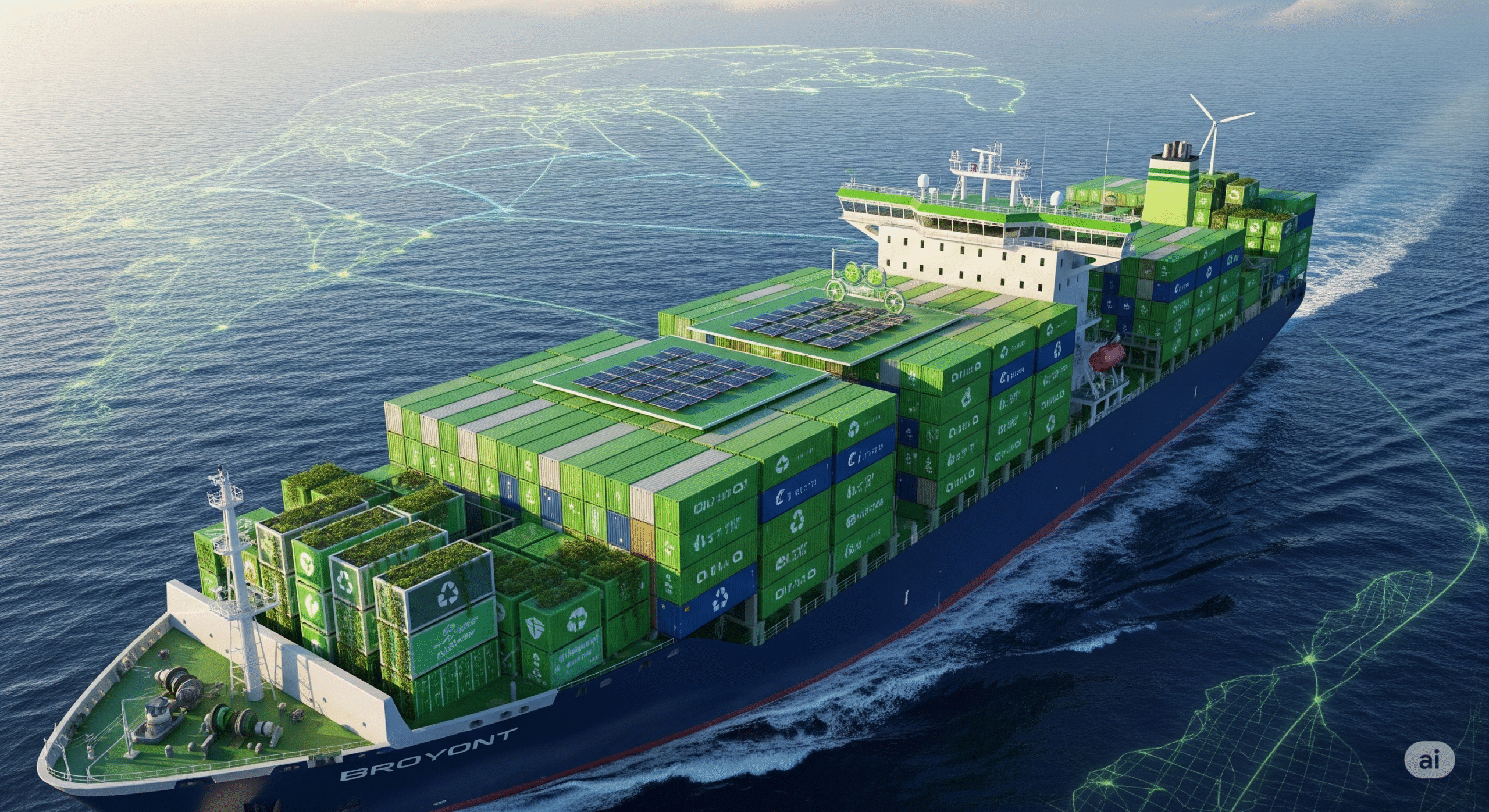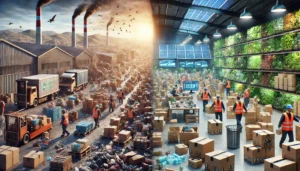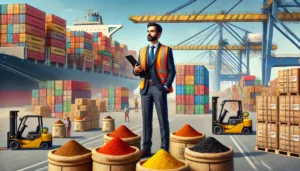I. Demand is Driving the Change
1. Conscious Consumers Are Setting the Bar
Today’s consumers aren’t just buying products, they’re buying values.
There’s a growing demand for goods produced and exported with environmental and ethical integrity. Shoppers expect transparent, traceable supply chains, and they’re using sustainability credentials to guide their choices. Certifications, carbon labeling, and responsible sourcing have become key decision points.
Without clear sustainability practices, exporters risk losing relevance, especially in markets where buyers are actively avoiding brands linked to greenwashing or environmental harm. In short, eco-consciousness has gone mainstream, and exporters must adapt to stay competitive.
2. Regulatory Push: From Option to Obligation
Governments worldwide are locking sustainability into trade policies.
From the EU’s Carbon Border Adjustment Mechanism to mandatory ESG reporting in several regions, environmental compliance is now essential for market access. Countries are raising the bar with stricter import regulations, emissions targets, and ethical sourcing mandates.
Exporters who can’t meet these evolving standards may face fines, rejected shipments, or exclusion from trade deals. Sustainability is now a baseline expectation not an added benefit. Being green isn’t just about reputation anymore it’s about survival in global markets.
Consumers and regulators are aligned: sustainability is non-negotiable. Exporters must adopt eco-friendly practices to remain trusted, compliant, and globally competitive.
II. Environment as Strategy, Not Sacrifice
1. Carbon and Climate: The Logistics of Emissions
Eco-friendly exporting directly addresses one of the biggest global challenges: carbon emissions.
From energy-hungry production to long-haul logistics, international trade has a major carbon footprint. Exporters are now turning to low-emission technologies, cleaner fuels, route optimization, and sustainable packaging to reduce their climate impact.
Small changes like switching to biodegradable materials or consolidating shipments can lead to significant CO₂ reductions. These aren’t just environmental wins; they’re also a way to meet emissions regulations and customer expectations.
2. Resource Stewardship as Long-Term Insurance
Sustainable exporters don’t just focus on carbon, they’re rethinking how they use resources overall.
Water conservation, waste reduction, and biodiversity protection are now strategic priorities. Green practices like circular production, efficient energy use, and eco-friendly raw materials are helping businesses minimize their environmental toll.
Beyond ethics, this is about resilience. Companies that manage resources responsibly are less vulnerable to supply chain shocks, rising material costs, and environmental disruptions. It’s not just doing good it’s future-proofing.
Environmental responsibility isn’t a cost, it’s a strategy. Exporters who embrace sustainability are not just reducing harm; they’re building smarter, leaner, and more resilient operations.
III. The Economics of Green Makeover
1. Sustainability Saves Money
Going green isn’t just ethical, it’s cost-effective.
By using energy-efficient machinery, reducing waste, and optimizing resource use, exporters can significantly cut operating costs. Green packaging, leaner logistics, and better material management often translate into lower overheads and higher margins.
Many companies that invest in sustainable tech report long-term ROI through efficiency, not just good PR.
2. Market Access & Premium Positioning
Eco-friendly practices open doors to high-value markets.
Regions like the EU, North America, and parts of Asia favor imports that meet strict environmental criteria. Products with recognized eco-labels and certifications are not only welcomed, they often command price premiums.
For exporters, this isn’t just about entry. It’s about standing out, charging more, and gaining loyal customers who value green credentials.
3. Competitive Differentiation Through Reputation
Sustainability builds brand equity.
In crowded markets, exporters with visible eco-commitments win trust faster, attract like-minded partners, and gain an edge over competitors still operating in the grey.
Green exporters often benefit from positive media coverage, stronger B2B relationships, and increased investor interest. In short, sustainability is a market advantage that can’t be bought it has to be earned.
Eco-friendly exporting delivers more than feel-good value; it drives efficiency, market access, and competitive strength. It’s not about being charitable, it’s about being smart.
IV. Tech & Innovation: Tools of the Transition
1. Smart Systems for Sustainable Proof
Sustainability isn’t just about action, it’s about proving it.
Exporters are adopting digital tools like lifecycle assessment (LCA) software, blockchain for supply chain transparency, and globally recognized eco-certifications (like FSC, Fairtrade, or ISO 14001) to validate their green claims.
These tools help businesses measure impact, ensure traceability, and meet evolving international standards all while building buyer trust. Without credible data, sustainability is just a buzzword. With it, it’s a strategic asset.
2. Adapting to Evolving Standards
Sustainability is not a one-time fix, it’s a moving target.
Exporters must constantly evaluate and refine their operations to keep up with changing regulations, buyer expectations, and industry benchmarks.
Ongoing audits, regular supplier collaboration, and data-driven impact reporting are now key to staying compliant and competitive. Smart exporters treat sustainability as a continuous improvement process, not a checkbox.
Tech is making sustainability measurable, trackable, and scalable. Exporters who leverage smart tools and adapt proactively are best positioned to lead in the next era of global trade.
V. A Triple Bottom Line: People, Planet, Profit
1. Social Justice and Ethical Trade
Sustainability goes beyond carbon; it’s also about how people are treated.
Ethical exporting includes fair labor practices, safe working conditions, and support for local communities. Certifications like Fairtrade or Sedex ensure that social responsibility is built into supply chains, not just tagged on for marketing.
Exporters who commit to ethical sourcing build trust with partners and consumers and avoid the reputational risk of being linked to exploitation.
2. Growth That Sustains Growth
Green practices aren’t a trade-off, they’re a growth strategy.
Sustainable exporters benefit from lower long-term costs, access to government incentives, and stronger relationships with investors, buyers, and regulators.
They also tend to be more resilient and better prepared to handle raw material shortages, regulatory shifts, or climate-related disruptions. In short, they’re built for the long game.
Eco-friendly exporting supports people, the environment, and profits proving that doing the right thing is also the smartest way forward.
VI. Proof in the Numbers: The Global Green Boom
The shift to sustainable exporting isn’t speculative; it’s already reshaping global trade.
- In 2021, global trade in “green goods” like renewable energy tech, recycled materials, and eco-packaging hit $1.8 trillion, a 36% increase since 2012 (UNCTAD).
- According to the Carbon Trust, 62% of businesses implementing sustainability measures reported direct revenue growth linked to those efforts.
- Countries and regions are rolling out incentives, R&D support, and green trade agreements to fast-track eco-friendly exporters.
The message is clear: sustainability is driving performance.
From boardrooms to customs checkpoints, eco-credentials are unlocking capital, access, and influence.
Sustainable exporting is already a global economic engine, not just an environmental philosophy. The data confirms: those who invest in green are positioned to lead the next era of trade.
Conclusion: The Future Is Green, or It Isn’t
Eco-friendly exporting is no longer a fringe movement or a branding tactic, it’s the new foundation of global trade. Driven by consumer demand, shaped by regulation, and powered by innovation, sustainable practices are now critical for staying competitive, compliant, and credible.
Exporters who embrace sustainability aren’t just reducing harm; they’re building resilient, future-ready businesses. They cut costs, access premium markets, earn consumer trust, and align with a global shift that shows no signs of slowing.
In a world where markets are watching, regulations are tightening, and the climate clock is ticking, one thing is clear:
Going green isn’t a choice, it’s the cost of entry.
Frequently Asked Questions
1. What is sustainability in business?
Sustainability in business means operating in a way that doesn’t harm the environment or society while ensuring economic viability. It balances ecological preservation, social equity, and long-term profitability.
2. Why is sustainability important?
Sustainability matters because it protects resources for future generations, improves quality of life for people and ecosystems, and reduces risks like regulatory penalties, resource scarcity, and reputational damage.
3. Why is sustainability important for development?
Sustainability supports progress by ensuring natural resources last, ecosystems stay healthy, and communities remain strong making development both possible and equitable for current and future generations.
4. What defines an eco‑friendly exporting product?
An eco‑friendly export product is made with minimal environmental impact, using renewable or recycled materials, fair labor practices, low-waste production, and sustainable packaging. It’s often certified to prove such claims.
5. How can exporters ensure transparency and avoid greenwashing?
Exporters establish trust using mechanisms like third‑party certifications (e.g. FSC, Fairtrade), lifecycle assessments, blockchain tracking, supplier audits, clear impact reporting, and verified sustainability metrics.




